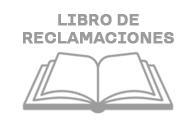Cusco always has something to surprise us. The Tahuantinsuyo capital always has new places to offer to the tourist, places full of history you can go inside, explore and gain knowledge about the largest Empire of America.
One of these places is Valle Sagrado. Sacsayhuaman, Maras, Moray, etc. We are certain you have heard about these tourist destinations but how about Ancashmarca or Urco? We want to take you to discover the other side of the Valle Sagrado, hidden places where you can go deeper into the history of the pre-Incan and Incan empires.
In the northern part of the Valle Sagrado, 50 km/31 mi north of Cusco, is Calca, a province with a little over 60,000 inhabitants that emanates history in all of its corners. Today, we are going to mention two of the archeological places you will be able to find in Calca, they are less explored by tourists but are still exciting. Would you like to explore them? Keep on reading!
Ancashmarca, a Trail From the Past
Although the majority of archeological places that exist nowadays in Cusco correspond to the Inca era, we can also find some remnants of the pre-Incan cultures. An example of this is Ancashmarca, an archeological complex built in the steep slopes of a great mountain that operated both in the past era and in the later era, the one corresponding to the Inca Empire.
Ancashmarca is divided in two sectors where its circular edifications stand out. It is believed this place served both for homes, food storage (thanks to the famous colcas) and a funerary setting.
To get to Ancashmarca you will have to travel to the small city of Calca and from here take a bus or taxi for 23 km/14 mi that separate the city from the archeological complex.
Urco, the Setting of the Cult to Water
Only 14 km/9 mi south of Ancashmarca is the Archeological Complex of Urco, a place that draws attention by its impressive pyramid with steps and by being the setting of the Unu Urco, a festival of cult to water that is currently celebrated and that congregates more than 1,000 actors and 5,000 spectators.
The Archeological Complex of Urco was constructed in the Inca era and was built in five sectors. To this day, this place is inhabited by families from the area, who have inherited the ancestral techniques of agriculture from the Incas and also use the platforms to plant their crops. Their most important product is the delicious giant corn (or maize) from Cusco.
As mentioned before, the Archeological Complex of Urco is located 14 km/9 mi south of Ancashmarca and 6 km/4 mi of Calca; therefore, you can visit both archeological places on the same day.
The Great Museum of the Tahuantinsuyo
But the gem of the Valle Sagrado awaits you at the Gran Museo of the Tahuantinsuyo, a place that gathers thousands of found objects in the different archeological complexes and citadels from the Inca era.
This museum, located near the Sacsayhuaman fort, has six thematic halls related to the different areas of the Tahuantinsuyo, information about the Qhapaq Ñam or Camino Inca, and areas dedicated to the beliefs and arts of this empire, among other topics.
The Great Museum of the Tahuantinsuyo, counts with more than 46,000 pieces recovered from the University of Yale, pieces which were taken by Hiram Bingham to be studied after the discovery of Machu Picchu.
The opening date of the Great Museum of the Tahuantinsuyo has not yet been set so if you are planning your trip to Cusco, keep posted and if you are in luck, you will be able to enjoy which promises to be one of the best museums of our country.
As you can see, even if you travel to Cusco many times, it always has places for you to discover and to keep on falling in love with this city. Come visit us, we welcome you aboard on our trains to Machu Picchu!











